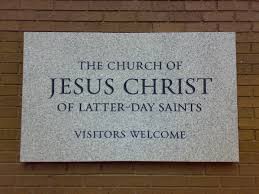The 1800s marked a pivotal period in global history, most notably with the rise of the Industrial Revolution. Beginning in the late 18th century in Britain and spreading across Europe and the United States throughout the 19th century, the revolution transformed economies from agrarian-based systems to industrial powerhouses. Factories, mechanized production, and advancements in transportation, like the steam engine and the railroad, fueled this unprecedented economic growth. The period saw rapid urbanization, the expansion of middle classes, and the creation of new global trade networks.
The Industrial Revolution and Economic Growth
The Industrial Revolution fundamentally altered how goods were produced and distributed. By the early 1800s, factories in Britain were producing textiles, iron, and coal at rates never before seen, allowing for cheaper goods and the growth of consumer culture. As railroads expanded, markets became interconnected, and trade routes between Europe, the Americas, and Asia flourished. The revolution also spurred the rise of industrialists like Andrew Carnegie and John D. Rockefeller in the U.S. by the mid-to-late 19th century, men who built vast fortunes through steel, oil, and rail.
By the 1820s, the transformation was in full swing, with Britain becoming the global economic leader, soon followed by the United States. The spread of wealth created new opportunities for many, but also stark inequality. The working class grew, often working in harsh conditions, but the emerging middle class saw the benefits of industrial growth through increased access to education, goods, and financial opportunities.
The Book of Mormon and Joseph Smith (1820s)
Amid this era of technological and social upheaval, Joseph Smith founded The Church of Jesus Christ of Latter-day Saints after claiming to have received visions and guidance from divine figures. In 1823, Smith said he was visited by an angel named Moroni, who directed him to golden plates buried in a hill near his home in Palmyra, New York. These plates, written in a script he called “Reformed Egyptian,” contained the history of ancient peoples in the Americas. Smith translated the plates, and in 1830, he published the Book of Mormon, a new scripture said to complement the Bible.
The Book of Mormon became the foundation of the Latter-day Saint movement, and by the 1830s and 1840s, Smith and his followers began establishing settlements, first in Ohio and Missouri, then later in Illinois. Smith’s claims and religious innovations drew both converts and controversy, but his leadership laid the foundation for what would become a global religious movement, ultimately based in Salt Lake City, Utah.
Masonic Influence and the Spread of Wealth
During this same period, secret societies like the Freemasons were becoming increasingly prominent, particularly among the social and economic elites of Europe and the Americas. Freemasonry, which traces its origins back to the stonemason guilds of medieval Europe, became a widespread fraternal organization by the 18th and 19th centuries. Many influential leaders—presidents, industrialists, and even revolutionaries—were linked to Masonic lodges, including George Washington, Benjamin Franklin, and Simon Bolívar.
Freemasonry emphasized principles of brotherhood, secrecy, and mutual aid, with members often holding key positions in politics, finance, and industry. Some historians suggest that the Masonic network helped facilitate the spread of wealth and influence across national boundaries, particularly during the period of industrialization. This allowed members of Masonic lodges to establish business connections and gain political influence that stretched across continents.
In many cases, Masonic connections allowed members to rise within the burgeoning capitalist system, gaining access to new opportunities created by industrial expansion. There was a strong connection between Masonic ideals of self-improvement, merit, and industry and the success of many wealthy families and industrial dynasties during the 19th century. Prominent industrialists and politicians often had Masonic ties, which reinforced their positions within a system that rewarded ambition and wealth accumulation.
Some even claim that Masonic bloodlines helped shape the new economic order of the 19th century, with certain powerful families—such as the Rothschilds in Europe—being linked to Masonic ideals and institutions. While this connection is difficult to substantiate fully, it is clear that Freemasonry’s influence was widespread among the elites of the 1800s, helping facilitate the movement of capital, ideas, and power across borders.
Conclusion: A Century of Transformation
The 1800s were a century of profound change, marked by the Industrial Revolution’s reshaping of economies and societies, the publication of the Book of Mormon as a religious cornerstone, and the pervasive influence of organizations like the Freemasons. The wealth and power of the time were not merely products of new machines or factory systems, but also of complex networks of influence, including those rooted in Masonic connections.
The Industrial Revolution spread wealth, but it also deepened class divisions, just as Joseph Smith’s new religion attracted both converts and detractors. The interplay between spiritual beliefs, economic systems, and secret societies like the Freemasons created a dynamic world in the 19th century, one that still resonates with the legacies of industrialization, religious innovation, and global capitalism.
